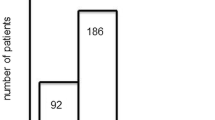Abstract
Sera were collected from patients with acute myelogenous leukaemia (AML) at various times during remission induced by chemotherapy, but after cessation of all immunosupressive treatment. These sera were tested, by a sensitive assay using radio-labelled antiglobulin binding, for the presence of antibodies which bound to the surface of autologous AML cells. The cell populations examined were chosen on the basis that they proliferated in short-term culture, did not bind anti-Ig reagents directly, and that more than 80% of the cells did not carry detectable Fc receptors. With 8/9 patients studied, no specific antibodies of the IgG or IgM class could be detected in serum samples taken during remission. IgG and IgM antibodies from the remission sera of one patient were found be bind to autologous leukaemic cells, but this was found to be due to the presence of rheumatoid factor (RF) and removal of the RF activity abolished this binding. This study has, like others, failed to detect autologous antibodies, in remission sera, that are directed against membrane components of AML cells.
Similar content being viewed by others
Rights and permissions
About this article
Cite this article
James, S., Dean, C. & Alexander, P. Failure to detect autologous antibodies in the remission sera of patients with AML: complications introduced by the presence of rheumatoid factor. Br J Cancer 42, 385–391 (1980). https://doi.org/10.1038/bjc.1980.249
Issue Date:
DOI: https://doi.org/10.1038/bjc.1980.249
- Springer Nature Limited




